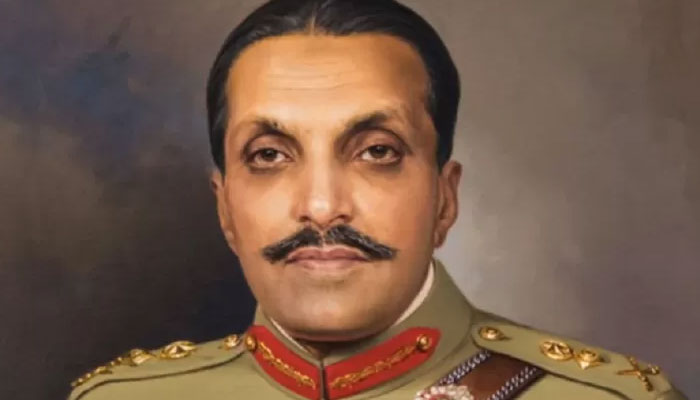General Muhammad Zia-ul-Haq remains one of the most remarkable figures in Pakistan’s history. His legacy, spanning from 1977 to 1988, marked a transformative period in which Pakistan underwent sweeping changes in its political, religious, economic, and geopolitical fabric. Born in 1924 in Jalandhar, British India, Zia-ul-Haq was a career military officer who rose through the ranks of the Pakistan Army to become its Chief of Army Staff in 1976. Just a year later, on July 5, 1977, he seized power in a military coup, overthrowing Prime Minister Zulfikar Ali Bhutto amid widespread civil unrest and allegations of electoral rigging.
During his tenure, he did many remarkable things for Pakistan. One of Zia-ul-Haq’s most enduring contributions was his systematic Islamization of the country’s legal and educational systems. Believing that Pakistan’s identity was fundamentally rooted in Islam, Zia sought to align the state more closely with Islamic principles. He introduced the Hudood Ordinances in 1979, which implemented punishments for certain crimes in accordance with Islamic jurisprudence. The Federal Shariat Court was established to ensure that laws conformed with Islamic injunctions, and religious scholars gained increasing influence in policymaking. These measures laid the foundation for a more overtly Islamic public and legal culture that persists in varying degrees to this day. In education, Zia promoted the inclusion of Islamic content in textbooks and encouraged the expansion of madrassas, or religious schools, across the country. This effort was driven by his desire to nurture a generation of Pakistanis grounded in Islamic values. Many of these institutions received state patronage and foreign funding, particularly from Gulf countries like Saudi Arabia.
Zia also placed significant emphasis on morality and public behavior, using state-controlled media to propagate Islamic values and introduce codes of conduct. Television and radio programs were censored to promote modesty and piety. Women were required to adhere to stricter dress codes in public spaces and on state media. People viewed these steps as necessary for preserving cultural identity. In terms of foreign policy beyond Afghanistan, Zia-ul-Haq cultivated strong ties with Muslim-majority countries, particularly in the Middle East. His policies strengthened the Pakistan-Saudi Arabia relationship, which included significant financial aid, employment opportunities for Pakistani workers, and ideological alignment. He also supported pan-Islamic initiatives and presented Pakistan as a leader of the Muslim world. This strategic alignment elevated Pakistan’s standing in the Organisation of Islamic Cooperation (OIC) and helped shape its identity as an Islamic republic engaged in global Muslim affairs.
In the turbulent landscape of South Asian geopolitics, where tensions between India and Pakistan have often teetered on the brink of war, few events stand out as moments of spontaneous diplomacy quite like General Muhammad Zia-ul-Haq’s unprecedented cricket diplomacy in 1987. Zia used the unifying passion of cricket to de-escalate one of the most serious military stand-offs in the subcontinent since the 1971 war. His visit to India to watch a cricket match in Jaipur, under the pretext of personal interest in the game, was in fact a masterstroke of informal diplomacy that significantly reduced immediate tensions and momentarily rekindled hopes for peaceful engagement between the two rival nations.
The context in which this act of cricket diplomacy unfolded was extremely volatile. In early 1987, India launched Operation Brasstacks, the largest military exercise ever conducted on its soil since independence. Although officially framed as a military readiness drill, the sheer scale and proximity of the exercise raised alarm bells in Islamabad. Pakistan perceived it as a possible prelude to an Indian invasion. Amidst this dangerous impasse, Zia-ul-Haq made an unexpected announcement—he would be traveling to India to watch the second day of the India-Pakistan Test match being played in Jaipur. At face value, this appeared to be a mere personal gesture by a cricket enthusiast. However, beneath the surface, it was a calculated diplomatic move. Zia understood the cultural significance of cricket in both India and Pakistan, where the sport is nothing short of a shared national obsession. By choosing to attend the match, he cleverly sidestepped formal diplomatic procedures that were effectively frozen and instead used the popular sport as a neutral platform for engagement.
Upon his arrival in Jaipur on February 21, 1987, Zia’s presence was met with both curiosity and apprehension. During the match, he sat in the stands alongside Indian officials and delivered a brief but impactful message: “Cricket for peace.” Those three words would come to define the visit and symbolize a momentary thaw in the frosty relations between the two nations. Though not part of the official itinerary, Zia managed to secure a brief but crucial private meeting with Indian Prime Minister Rajiv Gandhi. Their conversation reportedly conveyed Pakistan’s intentions to avoid war and signaled a willingness to de-escalate tensions. The message landed. In the weeks that followed, both countries began to slowly pull back troops and the threat of imminent war dissipated.
The visit was lauded internationally as a rare example of creative diplomacy. Zia’s use of cricket as a tool of diplomacy showcased a different dimension of leadership. It was a gesture of goodwill masked in the casual garb of sportsmanship, allowing both countries to save face while stepping away from confrontation. It was also a strategic move. At the time, Pakistan was heavily involved in supporting the Afghan Mujahideen in their war against Soviet occupation. Opening a second military front with India would have stretched Pakistan’s resources dangerously thin. Zia’s visit bought Pakistan time and strategic space, while simultaneously diffusing international concerns over an Indo-Pak war. Zia-ul-Haq’s cricket diplomacy occupies a unique place in the annals of South Asian history. It demonstrated that even in a region marked by entrenched hostilities and military rivalries, symbolic gestures could create space for dialogue and reduce the risk of catastrophic escalation.
General Zia’s death in a mysterious plane crash on August 17, 1988, along with several senior military officials and the U.S. ambassador, brought an abrupt end to his rule. The circumstances of the crash remain a subject of speculation and conspiracy theories to this day. His departure marked the beginning of a new chapter in Pakistan’s democratic experiment, yet the systems, ideologies, and institutional arrangements he put in place continued to influence the country long after his demise.
General Zia-ul-Haq’s enduring contributions to Pakistan lie not only in the laws he enacted or the institutions he shaped, but in the cultural, ideological, and geopolitical shifts he set in motion. Whether viewed through a lens of admiration or critique, his rule irrevocably altered the trajectory of the nation. The legacy of his Islamization drive, his foreign alliances, and his reshaping of Pakistan’s political and military landscape remains deeply embedded in the country’s identity and institutions. Zia-ul-Haq’s era was one of profound transformation, the consequences of which continue to echo through the corridors of power and the conscience of the nation.






Comments are closed, but trackbacks and pingbacks are open.